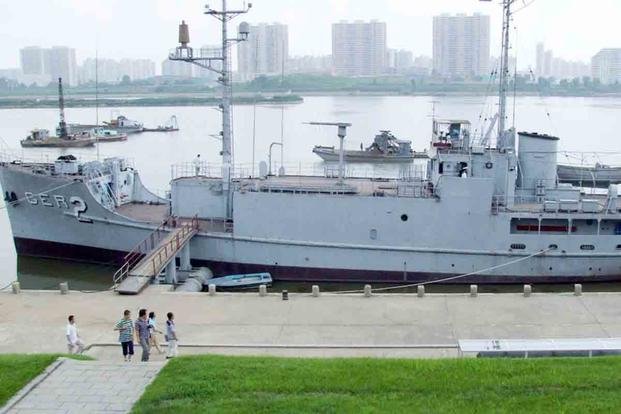
By Blake Stilwell
Between 1966 and 1969, the United States was increasingly engaged in South Vietnam, but a few thousands miles away, U.S. troops were still fighting in the previous war. On the Korean Peninsula, North Korea was becoming increasingly bold, firing on American soldiers.
Sporadic engagements with the North had occurred along the DMZ since the 1953 armistice that ended the Korean War. This time was different, however, as North Korean attacks began to involve thousands of U.S. troops. It was the closest North and South Korea came to another Korean War.
With U.S. military strength redeployed to Vietnam, North Korean leader Kim Il-Sung wanted to become such an annoyance that the United States would give up protecting South Korea. North Korea ambushed American units along the border and even infiltrated South Korea in an attempt to kill the president of South Korea at the Blue House, the presidential residence.
Then, on Jan. 23, 1968, North Korea seized the USS Pueblo, an unarmed U.S. Navy surveillance ship operating in international waters. North Korean gunboats, torpedo boats and MiG-21 fighters chased down the Pueblo, killing one sailor and capturing 82 others. The officers and crew of the Pueblo were held and tortured for 11 months. They underwent physical and mental therapy after their release.
Kim Il-Sung’s plan completely backfired. Not only did the capture of the Pueblo draw international ire for the North Korean regime, the American military increased its presence on the Korean Peninsula.
As his administration attempted to negotiate for the release of the Pueblo crew, President Lyndon B. Johnson sent six aircraft carriers to Korea, along with massive reserve reinforcements and sent $100 million in military aid to upgrade South Korea’s armed forces. But Johnson wanted to avoid another war in Korea, as the U.S. military was stretched thin in Vietnam and elsewhere.
Just days after the Pueblo was captured, the massive Tet Offensive began. North Vietnamese Army and Viet Cong soldiers launched a series of coordinated attacks all over South Vietnam. Most of the assaults on American and South Vietnamese positions either failed or were retaken quickly, but communist holdouts would linger for months after. The city of Hue would not be recaptured until March 1968.
The United States admitted the Pueblo intruded into North Korean territory, but only to secure the release of the Pueblo sailors. After their release in December 1968 and to this day, the U.S. government still maintains the ship was in international waters.
In 2017, President Donald Trump added North Korea as a state sponsor of terrorism. The move allowed surviving Pueblo sailors and the families of the deceased to sue North Korea under the Foreign Sovereign Immunities Act. They were awarded $2.3 billion in 2021, the largest amount awarded in a state-sponsored terrorism case — but no one knows how they will actually receive compensation.
The USS Pueblo, first launched in 1945, is still commissioned as an active ship in the U.S. Navy. The only older ship is the Revolutionary War-era USS Constitution. The Pueblo is currently moored on the Taedong River in Pyongyang, part of North Korea’s Victorious Fatherland Liberation War Museum.
Watch the actual “information” video shown aboard the Pueblo in North Korea below:





